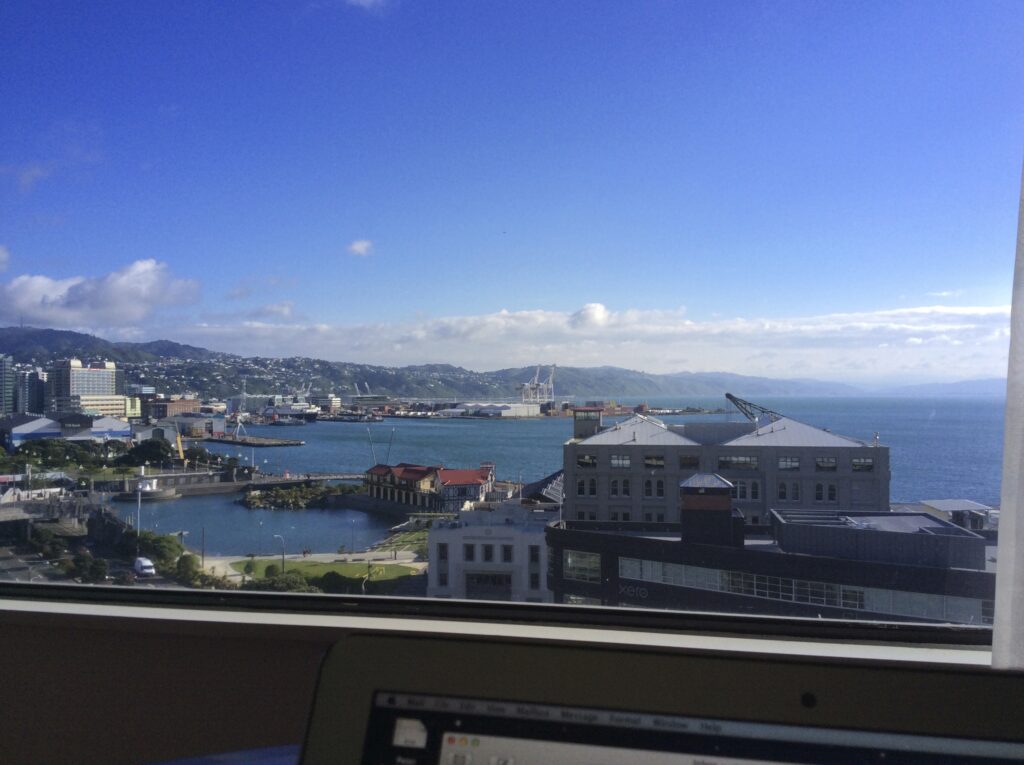Dear all
Have just enjoyed 4 excellent days at the Sports Med New Zealand conference – thanks for the great hospitality and view from my hotel room
Key message from my lecture to delegates was – we need to rethink our focus on tendon ‘healing’ – there is no imaging evidence it happens after loading or even after PRP. We need to look with other outcomes, eg tissue stiffness, at whether pathological tissue can adapt positively
Some interesting research this month – check it out…
Hope you enjoy
Peter
Littlewood et al. – patients with rotator cuff tendinopathy can self manage with exercise – buts need to educate re rationale, set expectations, and timely follow-up. Otherwise they freak out if not getting better immediately, as with most patients!
Wang et al. show that tenotomy to one Achilles tendon induces ‘overuse’ changes to the other side. What about central neuronal mechanisms?
Kardouni et al. – lack of association between US Doppler signal and pain shown yet again, this time in rotator cuff. Doppler very dependent on machine sensitivity and settings.
Behzad et al. – mast cells stimulate cultured tenocytes to produce COX2, PGE2 – mediated by TGFb1. Type I collagen gene expression reduced. Opposite to the effect of PGE2 of stimulating collagen synthesis in human studies, but maybe excess PGE2 is a destructive factor in early tendinopathy (see excellent review – Kjaer 2013)
Qi 2013 – lateral elbow tendinopathy associated with lateral ulna collateral ligament pathology on MRI (92% shared these features). Are they one in the same – compression?
Ahmad et al have published a narrative review of lateral epicondylitis – thorough and worth a read. Good to see mention of central sensitization and allude to concomitant neck pain as potential secondary hyperalgesic site
Rio et al – great abstract from (Sports Med Aust conference) comparing isotonic and isometric exercise in cross over design among patellar tendon patients and controls. Both had reduced single leg squat pain immediately after (modest decrease of 1-2 points on VAS). Lasted longer (30 mins) in iso group and was not associated with reduced MVC (fatigue). Reduced pain was associated with reduced cortical inhibition. Lots of lots of potential applications and follow ups
Backman et al – catecholamines stimulate tenocyte proliferation in animal tendinopathy and cultured cell models. Suggests a role in remodeling and pathology.
Marqueti et al found that anabolic steroids inhibited the positive effects of exercise on tendon structure in a rat model. Not a good idea! and often associated with ruptures in tendons that don’t usually rupture, ie patellar tendon
Lenskjold et al – great follow up study given recent evidence that the central core of the Achilles may not adapt to load after a certain age (Heinemeier et al. 2013). This case control study compared Achilles size, stiffness, collagen content and crossbridge content in runners that had been either active or inactive in their younger years. May be partly due to small numbers as stiffness was 15% higher in active group.
Hein et al. – prospective risk factor study with 249 runners – 10 developed Achilles tendinopathy over 12 months. Weaker hamstring isometric strength preceded injury. They also had less dorsiflexion, knee flexion in running gait (fits with stiff strategy – increased loading rate) and more eversion. No differences in running load over the study period.
Kolk et al compare radial shock wave to placebo in rotator cuff tendinopathy and find no difference at 3 and 6 months. That is no surprising, but the important outcome (not measured) is immediate pain change given ESWT is a short term pain modulator (maybe it has an effect in the cortex, as with isotonic and isometric loading?)
Boswell et al. investigated platelet:leukocyte ratio in PRP preparations from horse blood. Horse tendon tissue samples were cultured in various preparations. Leukocytes are generally thought of as bad, as they are associated with proinflammatory cytokines like TNFa. The question is should platelets be concentrated? This study shows that if they are then collagen synthesis is reduced so the authors suggest people should avoid concentrating platelets.
But hang on a minute !! what about if the tenocytes are already over-stimulated, reduced collagen synthesis would be a good thing in that case? Clinically, we never really know what the tenocytes are doing, and they may be doing different things in different parts of the same tendon. This questions this approach of justifying PRP ‘preparations’ on a basic science level, unless we have clinical evidence to show they have different effects and guide their use.
Last but far from least, great work from Angie Fearon et al. – disability and pain levels similar for hip OA and greater trochanteric pain syndrome (GTPS). GTPS had low work participation. Would have been great to look at psychological factors, fear avoidance, FABQ, pain mechanisms
References
Kjaer M et al 2013: What is the impact of inflammation on the critical interplay between mechanical signaling and biochemical changes in tendon matrix?
Heinemeier KM et al. 2013, Lack of tissue renewal in human adult Achilles tendon is revealed by nuclear bomb 14C. FASEB J 2013.


